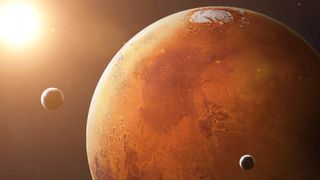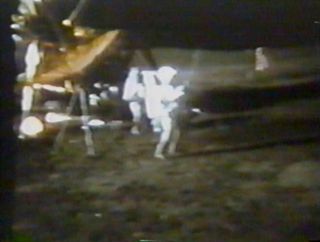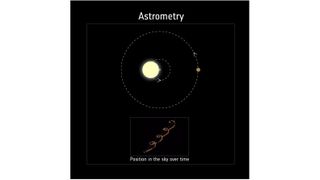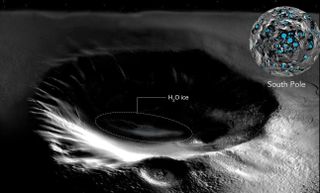Recordings of Martian earthquakes, or “marsquakes,” collected by a robot on the Red Planet may have finally solved a 50-year-old mystery: why one half of Mars is so drastically different from the other. Since the 1970s, researchers have known that Mars is split into two main areas. The northern lowlands cover around two-thirds of the planet’s northern hemisphere, while the southern highlands cover the rest of the planet and have an average elevation roughly 3 miles (5 kilometers) higher than that of the northern lowlands. Mars’ crust, which sits on…
Read MoreCategory: Space Stations
Space stations in orbit or planned
Putin axes Yuri Borisov, head of Russia’s space agency
Russia has a new space chief. Russian President Vladimir Putin has dismissed Yuri Borisov after 2.5 years in charge of the nation’s space agency Roscosmos, The Moscow Times reported today (Feb. 6). His replacement is 39-year-old Dmitry Bakanov, who most recently served as Russia’s deputy transport minister and led the state-backed Gonets satellite communications system from 2011 to 2019. New Roscosmos chief Dmitry Bakanov, at the time deputy minister of transport of the Russian Federation, attends a session on “LET’S GO: Integrated Unmanned Freight Transport Hits the Motorway for the…
Read MoreWhat brand of golf ball did Alan Shepard hit off the moon? The world may never know
Carlos Villagomez owns a golf ball that he believes was flown to the moon. If indeed it was, he may also hold the answer to a more than 50-year-old bit of trivia that otherwise may be forever lost to time. Villagomez was gifted the ball by Alan Shepard, the first American astronaut to fly into space, fifth human to walk on the moon and the world’s first (and to date, only) lunar golfer. Wrapping up his second of two moonwalks on NASA’s 1971 Apollo 14 mission, Shepard took a swing…
Read MorePerseverance Mars rover finds ‘one-of-a-kind treasure’ on Red Planet’s Silver Mountain
The Perseverance Mars rover has collected a rock sample on Mars unlike any other it has picked up so far. NASA’s Perseverance rover is currently exploring hills and rocky outcrops along the rim of Jezero Crater, where it has been collecting rock samples to reveal the area’s geological history. This week, NASA announced that the robotic explorer picked up a “one-of-a-kind treasure” in the form of a 1.1-inch (2.9-centimeter) rock sample from an area known as “Silver Mountain.” “My 26th sample, known as ‘Silver Mountain,’ has textures unlike anything we’ve…
Read More‘This idea that it takes like 250 years for Pluto to orbit the sun, I think that’s just bizarre.’ Star Trek scion Adam Nimoy talks our favorite (dwarf) planet for ‘I Heart Pluto’ festival
The 95th anniversary of Pluto’s official discovery by Clyde Tombaugh at the Lowell Observatory in Flagstaff, Arizona is rapidly approaching and the historic location is gearing up to host a grand celebration on Feb. 13-17, 2025 with a five-day series of educational and social activities to mark the occasion. Lowell’s sixth annual “I Heart Pluto Festival” will honor the remote icy world that was reclassified as a dwarf planet in 2006 and originally found at that location on Feb. 18, 1930. This year is also the tenth anniversary of NASA’s…
Read MoreNew ‘Star Wars: The Mask of Fear’ novel stars Mon Mothma, Bail Organa, and Saw Gerrera (interview)
Galavanting through the galaxy far, far away with seemingly effortless literary ease, prolific “Star Wars” author, Alexander Freed has been catapulted to the top tier of sci-fi writers. He is confidently able to navigate far off alien worlds and complex plotlines via their imposing storytelling skills, engaging characters, and vivid descriptions. Freed accumulated an impressive resume of video game work during his many years at Bioware and EA Dice/Electronic Arts, then later used that valuable experience to pen “Star Wars: Battlefront: Twilight Company,” the “Rogue One: A Star Wars Story”…
Read MoreGiant planet or ‘failed star?’ Newfound mystery world blurs the lines
One of the largest exoplanets to be found orbiting a relatively low-mass star has been discovered, thanks to the way the planet’s gravity drags its star around on its journey through space. The planet is the fourth world to be spotted in data from the European Space Agency’s Gaia mission, which was designed to map a billion stars in our Milky Way galaxy, cataloguing their masses, luminosities, temperatures and motions through space. It’s this latter property that led to the discovery of the giant exoplanet Gaia-4b. It orbits a star…
Read MoreNASA Goes Live: First Twitch Stream from Space Station
NASA astronaut Don Pettit aboard the International Space Station. (Credit: NASA) For the first time, NASA is hosting a live Twitch event from about 250 miles off the Earth aboard the International Space Station, bringing new audiences closer to space than ever before. Viewers will have the opportunity to hear from NASA astronauts live and ask questions about life in orbit. The event will begin at 11:45 a.m. EST on Wednesday, Feb. 12, livestreamed on the agency’s official Twitch channel: https://www.twitch.tv/nasa “This Twitch event from space is the first of…
Read MoreHubble Space Telescope spots a spectacular Bullseye in deep space (image)
NASA’s Hubble Space Telescope managed to capture an incredible image of a galaxy that looks an awful lot like a bullseye. “This was a serendipitous discovery,” said Imad Pasha, the lead researcher and a doctoral student at Yale University in New Haven, Connecticut, in a statement. “I was looking at a ground-based imaging survey and when I saw a galaxy with several clear rings, I was immediately drawn to it. I had to stop to investigate it.” In reality, this striking pattern formed 50 million years ago, when a small…
Read MoreSpaceX to launch water-hunting moon probe ‘Lunar Trailblazer’ on Feb. 26
LITTLETON, Colorado — A university-led lunar orbiter designed to pinpoint the location of ice or liquid water trapped in rocks on the moon’s surface is nearly ready for takeoff. The Lunar Trailblazer is slated to launch atop a SpaceX Falcon 9 rocket no earlier than Feb. 26 from NASA’s Kennedy Space Center in Florida. It will fly as a “rideshare” along with the primary payload — the Athena lunar lander, built by Houston company Intuitive Machines. Here within a Lockheed Martin clean room, where it underwent final grooming ahead of…
Read More







